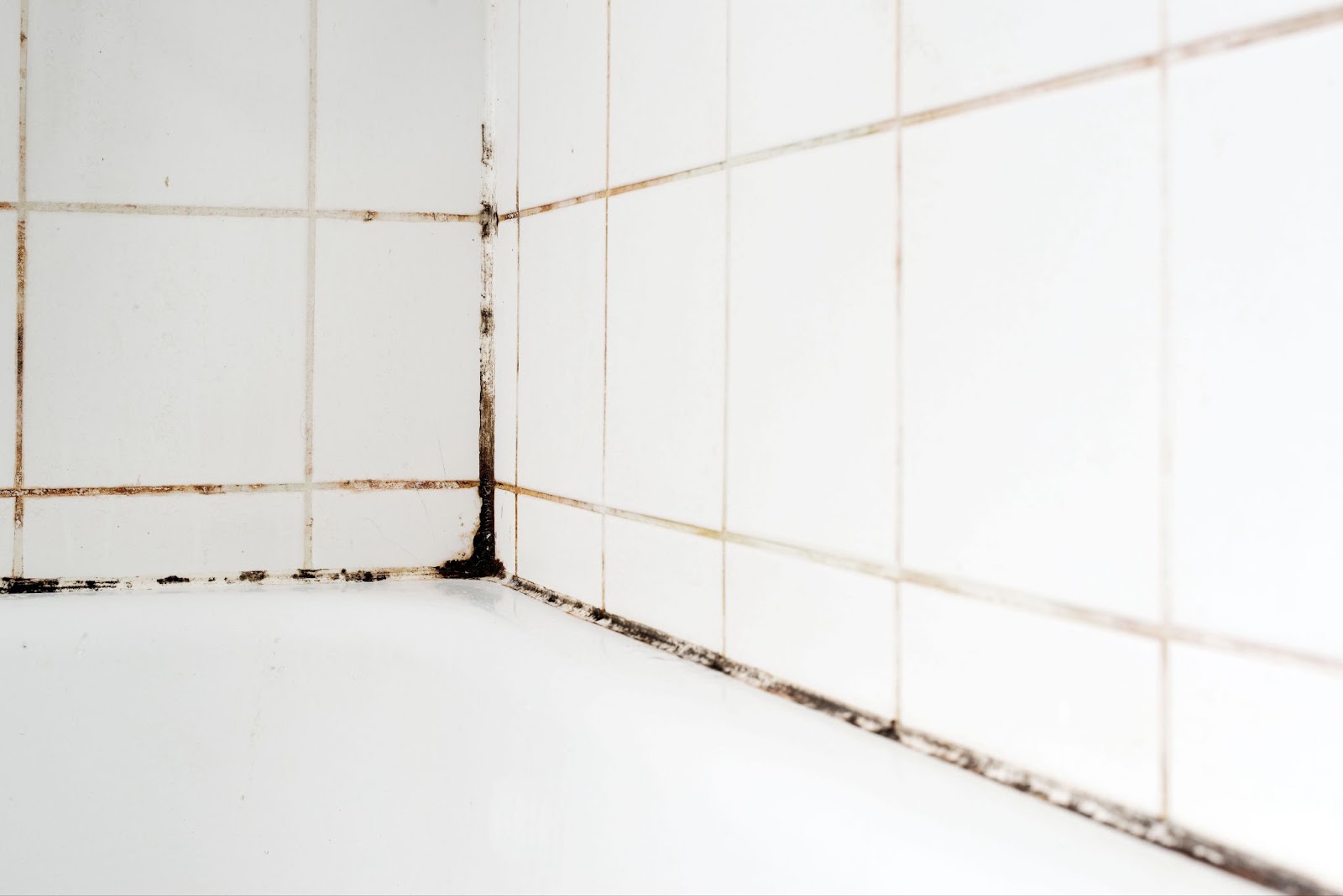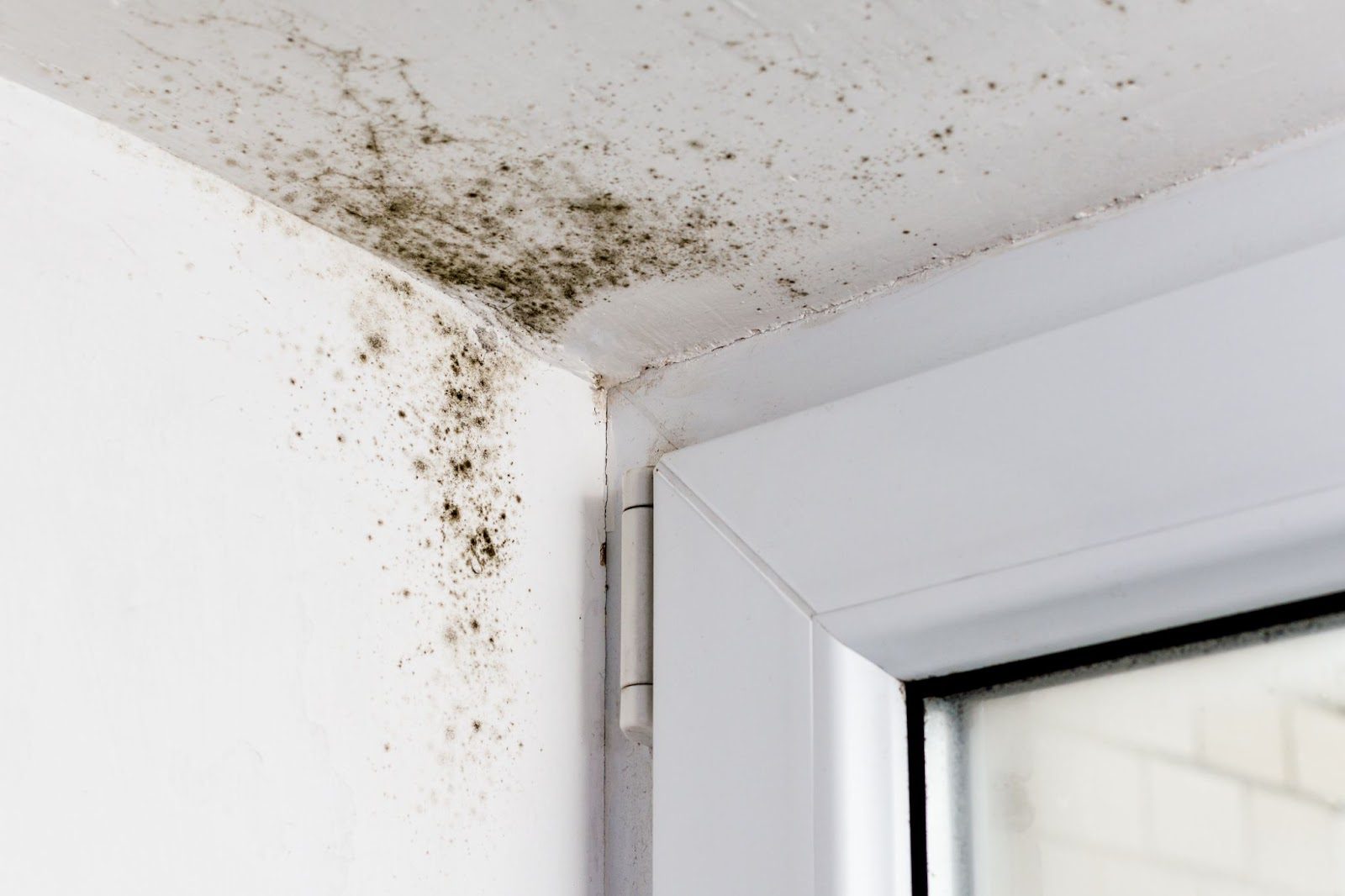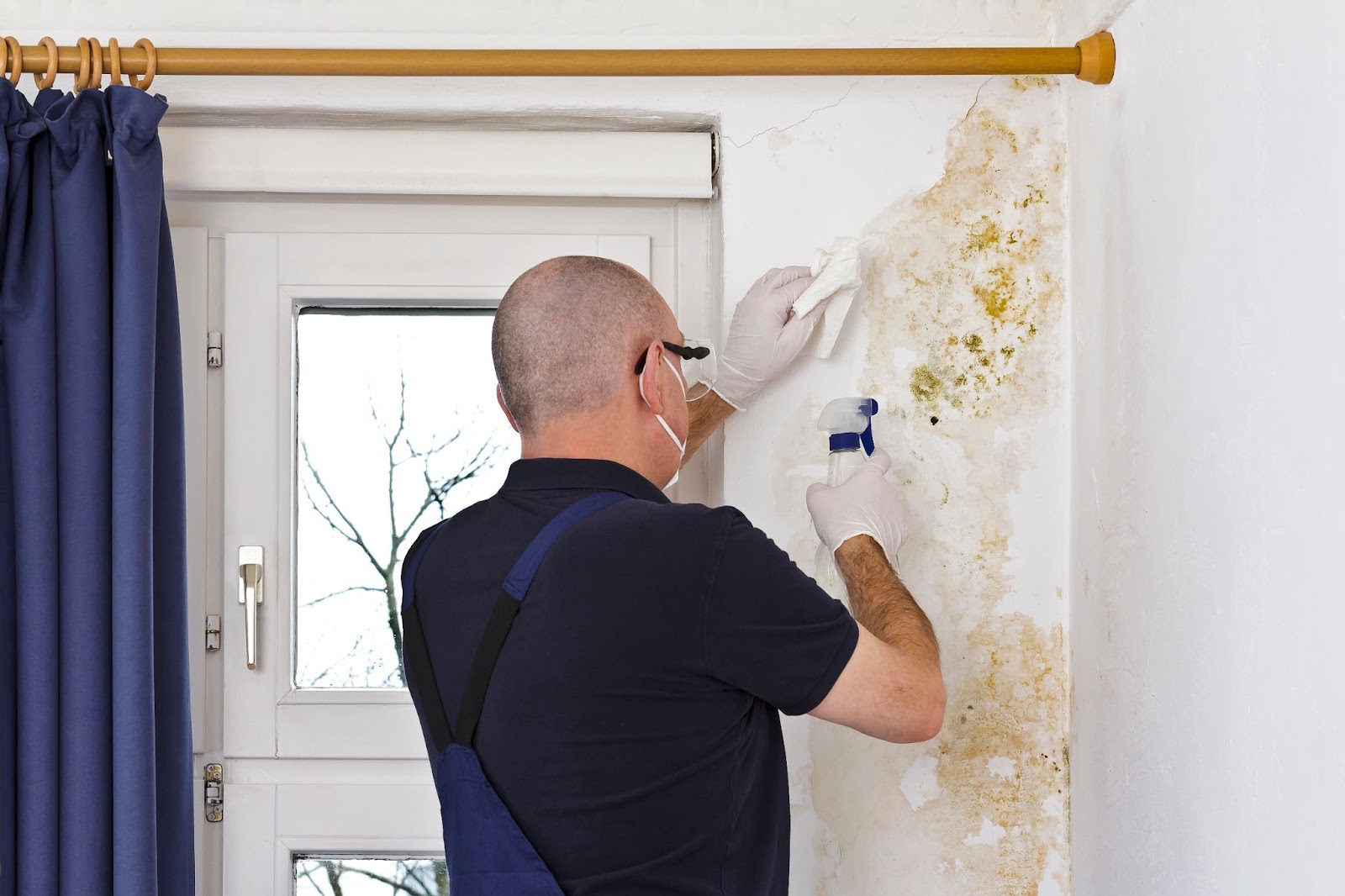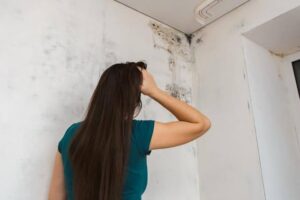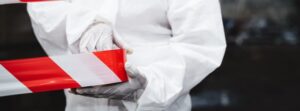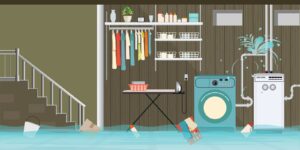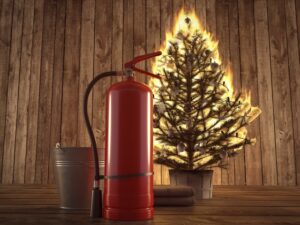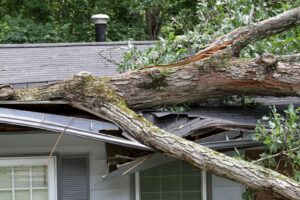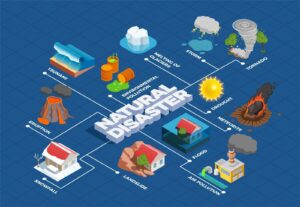Speed, safety, and seeking professional remediation help — these are the foundations to address water damage effectively.
Water damage strikes suddenly, turning a cozy home into a soggy mess. Burst pipes, leaky roofs, and floods wreak havoc, seeping into walls, floors, and furnishings. The destruction isn’t merely structural; it invites mold and mildew, posing serious health risks. Ignoring water damage accelerates deterioration, leading to costly repairs and health hazards.
Act quickly to address water damage. Swift cleanup minimizes damage, reduces mold risk, and prevents further complications. Delaying action allows water to spread, increasing repair costs and making your home unsafe. Effective cleanup requires thorough drying, disinfecting, and often professional remediation help. Every moment counts in mitigating damage and restoring your home.
This blog is your guide to address water damage cleanup. We’ll cover steps to identify, assess, and remediate water damage, from initial assessment to final restoration.
Whether facing a small leak or a major flood, understanding the process and knowing when to seek professional help makes all the difference. Equip yourself with the knowledge and tools to protect your home and health for a safe and speedy recovery.
Understanding water damage
Water damage strikes from all angles and wreaks havoc in various ways. Let’s explore the main culprits:
1. Natural disasters
Floods and hurricanes unleash torrents of water that submerge homes, wash away structures, and leave behind extensive damage. These disasters overwhelm drainage systems and infiltrate every corner, demanding immediate attention.
2. Plumbing issues
A small drip from a burst pipe or hidden leak may quickly escalate into a full-blown crisis. Plumbing issues start small but can flood entire rooms, damaging walls, floors, and personal belongings. Prompt repair is crucial to prevent extensive damage and costly repairs.
3. Household incidents
Everyday appliances may become sources of water damage. Malfunctions in washing machines, dishwashers, or water heaters release gallons of water, soaking carpets, floors, and walls in minutes. Regular maintenance and swift action are key to preventing these incidents.
Types of water involved in damage
The type of water involved plays a crucial role in determining the severity of the damage and the water damage cleanup process.
1. Clean water
Clean water comes from sources like broken pipes, overflowing sinks, or rain. It poses minimal health risks initially but can become contaminated if left unattended. Quick action to remove and dry clean water is essential.
2. Grey water
Grey water from dishwashers, washing machines, and bathtubs contains some contaminants and poses moderate health risks. It harbors bacteria and chemicals, requiring thorough sanitation and protective measures.
3. Blackwater
Black water is the most dangerous, including sewage, floodwater from rivers, and toxic substances. It poses significant health risks due to pathogens and harmful chemicals. Professional remediation, specialized equipment, and strict safety protocols are necessary for cleanup.
Understanding the causes and types of water damage equips you to tackle any water-related disaster effectively. Recognizing the source and nature of the damage is the first step in addressing the problem and restoring your home to a safe, livable condition.
Assessing the damage
Inspecting water damage requires a keen eye and a thorough approach. Start with visible signs and then delve into hidden areas.
Look for standing water, which often pools in basements, bathrooms, or around appliances. Check for stains on walls, ceilings, and floors, which reveal where water has seeped in. Notice discoloration, bubbling paint, or warped wood, as these indicate water’s presence. These visible signs often hint at deeper issues.
Explore areas where water damage hides, like behind walls and under floors. Swollen baseboards, peeling wallpaper, or moldy smells are telltale signs. Use moisture meters to detect dampness inside walls or under carpets. Thermal imaging cameras reveal cold spots caused by moisture, providing a clearer picture of hidden damage. Unearth these dangers to prevent future problems.
Determining the extent of mold and mildew growth
Mold and mildew differ in appearance and impact. Mildew typically appears as a white or gray powdery substance on damp surfaces like shower tiles.
Mold appears in various colors — black, green, or orange — and has a fuzzy or slimy texture. It penetrates deeper into materials, making it harder to remove and more damaging. Correct identification helps tailor your cleanup approach.
Moisture meters and thermal imaging
It’s possible to determine mold and mildew spread using specialized tools. Moisture meters measure moisture levels in materials, indicating potential mold hotspots.
Thermal imaging cameras detect temperature variations caused by moisture, pinpointing hidden damp areas behind walls and floors. These tools help map out affected areas, ensuring comprehensive cleanup and preventing future growth.
By inspecting visible and hidden areas and accurately assessing mold and mildew growth, you will be able to develop an effective plan to tackle water damage. Thorough assessment forms the foundation of successful cleanup, safeguarding your home and health from lingering issues.
Safety precautions before cleanup
It’s very important to prioritize safety by equipping yourself with the right personal protective gear before tackling water damage cleanup.
Masks and gloves
Wear an N95 respirator mask to protect your lungs from mold spores, dust, and harmful particles. Use waterproof, durable gloves to shield your hands from contaminants and cleaning chemicals, ensuring they stay safe and dry throughout the process.
Protective clothing
Wear long sleeves, long pants, and waterproof boots to protect your skin from mold, mildew, and other hazards. Consider disposable coveralls for added protection, allowing you to discard contaminated clothing safely after use.
Ventilation and containment
Set up fans to promote airflow and speed up the drying process. Use dehumidifiers to reduce moisture levels in the air, making it harder for mold and mildew to thrive. Position these devices strategically to cover the most affected areas and run them continuously until everything is thoroughly dry.
Seal off affected areas with plastic sheeting and tape to prevent the spread of mold spores and contaminants to unaffected parts of your home. Close doors and windows leading to the contaminated zones, and use air scrubbers with HEPA filters to clean the air within the sealed space, reducing the risk of cross-contamination.
These precautions protect your health and enhance the efficiency of the cleanup process.
Cleanup process
1. Remove standing water
You’ll want to act quickly to remove standing water, which is the first crucial step in cleanup. Stagnant water causes severe damage, so it’s imperative to move quickly.
Use pumps to extract large volumes of water from flooded areas. For smaller puddles or hard-to-reach spots, use wet vacuums. These powerful tools efficiently remove water, leaving surfaces relatively dry.
After removing most of the water, tackle the remaining moisture. Use towels, sponges, and mops to soak up dampness. This step is vital to prevent mold and mildew.
2. Drying and dehumidifying
Thoroughly dry the affected areas to stop mold growth and restore normalcy to your home.
Position fans to maximize airflow and speed up drying. Use dehumidifiers to remove moisture from the air, reducing humidity and preventing mold. Keep these devices running until everything is completely dry.
Monitor humidity levels with hygrometers to ensure the environment stays dry. Keep humidity below 60% to inhibit mold growth. Adjust fans and dehumidifiers as needed.
3. Cleaning and disinfecting
Choose cleaning solutions based on the materials you’re treating. Use bleach or mold removers for hard surfaces, and gentle, fabric-safe cleaners for upholstery and carpets. Follow manufacturer instructions for effective disinfection.
Different surfaces need different cleaning methods. Scrub walls and hard floors with a brush and disinfectant. For carpets, consider steam cleaning to remove deep contaminants. Clean and sanitize all furniture surfaces thoroughly.
4. Mold and mildew remediation
Address mold and mildew quickly to prevent health hazards and further damage.
Dispose of heavily contaminated materials that can’t be salvaged, like drywall, insulation, and carpet padding. Safely bag and remove these items to stop the spread of mold.
After removing the contaminated materials, apply mold inhibitors to affected areas. These products prevent mold regrowth. Inspect the area regularly to catch early signs of mold.
Each of these steps, from removing water to mold remediation, is crucial for a thorough and successful recovery.
Preventing future water damage
Regularly examine your plumbing system for leaks, corrosion, and weak spots. Inspect pipes under sinks, behind toilets, and around water heaters. Ensure appliances like washing machines, dishwashers, and refrigerators are in good working condition and free from leaks. Replace worn hoses and fittings to prevent unexpected bursts.
Your roof and foundation are your home’s first line of defense against water damage. Conduct regular inspections to spot any signs of wear and tear. Look for missing or damaged shingles, cracks in the roof, and clogged gutters. Check the foundation for cracks, shifts, or signs of water pooling around the base. Address any issues promptly to maintain your home’s integrity.
Installing preventive measures
Install sump pumps in your basement to keep water out during heavy rains or floods. Ensure they are properly maintained and have battery backups for power outages. Backflow valves in your plumbing system prevent sewage from backing up into your home during storms, adding extra protection.
Waterproof your basement and crawl spaces to prevent water intrusion. Apply sealants to walls and floors to block moisture. Install vapor barriers to reduce humidity and keep water out. Ensure proper grading around your home to direct water away from the foundation.
When to call a professional
Knowing when to handle a problem yourself versus when to call an expert can save you time, money, and stress.
Call a professional if mold spreads beyond a small, contained area. Mold infiltrates walls, ceilings, and floors, making it tough to eliminate without specialized equipment and expertise. Large-scale infestations pose serious health risks, and improper handling may even worsen the problem.
Seek professional help when water damage compromises your home’s structural integrity. Signs include sagging ceilings, buckling floors, and warped walls. These issues threaten home safety and require precise repair techniques to restore stability.
Total Flood and Fire Restoration — Your mold and mildew experts
Tackling water damage promptly and effectively is crucial for protecting your home and health. From understanding the causes and assessing the damage to implementing safety precautions and preventing future issues, each step is vital. However, knowing when to call in the experts is equally important.
For comprehensive and reliable assistance, trust Total Flood and Fire Restoration. Our experienced team offers expert assessments, state-of-the-art equipment, and thorough remediation services, ensuring your home is restored to its best condition. When disaster strikes, contact Total Flood and Fire Restoration. We are your go-to partner for a swift and safe recovery.

